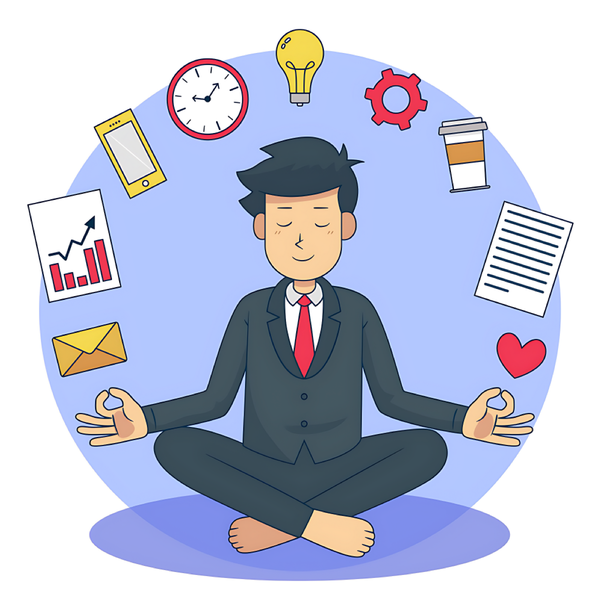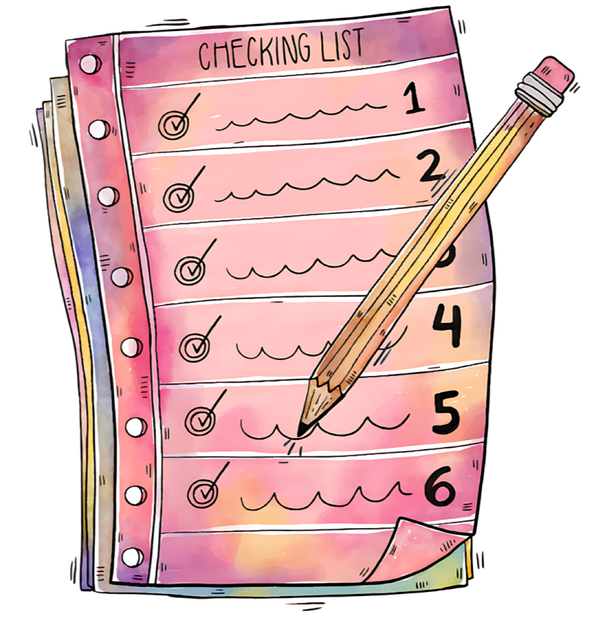16 Time Management Hacks to Boost Your Productivity
Jun 6, 2024 by Vreny Blanco · 9 min read · Time Management

Time management can be challenging. It often feels like there are not enough hours in the day to accomplish all the tasks we have planned. However, with the right approach, time becomes a valuable asset.
In this blog post, I’ll share 16 essential strategies to help you maximize your productivity and reach your full potential while managing your time.
Get ready to succeed!
What is time management?
Time management is the practice of using the time that you have available in a useful and effective way, especially in your work.1

How to Improve Your Time Management Skills
Time management involves organizing and protecting your time as you adjust and adapt to different situations.2 The aim is to boost your productivity, efficiency, and reach your goals.3 4
Here we have listed 16 practical strategies to help you improve your time management skills:
1. Take Advantage of Your Biological Prime Time
- Most people are more productive during a specific time of the day. How is it for you? When are you typically most productive? At night or in the morning?
- Knowing when your most productive time is, can help you plan your days more effectively.3 5
- Schedule the most important and complicated tasks first, and at your peak productivity times.3 5
2. Do a Time Audit
- Be aware that your time is a limited resource.2
- Find out where your time is spent.4 Track everything you do for a week to get an accurate picture of your time usage. Review the reports at the end of the week and evaluate.3
- After finishing a project, assess how long you thought it would take versus how long it actually took.2
- Consider how the tasks you are doing right now will help or hinder you in the future.2
- If you think you might be spending too much time on a project, step back and evaluate its importance.2
- Track how much time you spend on time-consuming apps and websites like social media, YouTube, online games, and Netflix. Your phone and computer usually have a screen time option where you can easily find this information.
3. Establish a Daily Routine
- It takes 30 days to create a habit, but good habits make your life easier.6
- Establish a consistent routine that works even when your emotions fluctuate.
- When you establish a daily routine, you are less likely to make unproductive decisions, such as talking yourself out of doing what you had planned to do.6
- Write down your to-do list first thing in the morning or at the end of each day.
- Be specific while planning your workday. This will help you stay focused and productive.4
- Be honest with yourself when making your schedule. Schedule only tasks you will do. Creating a schedule you can’t keep is setting yourself up for frustration.6
- Use digital tools such as Google Calendar, Alexa, Siri, etc., to remind you of your daily tasks or activities.
4. Schedule Time for Relaxation
- It’s crucial to turn off your work brain for your health and future productivity. Tired people procrastinate more and get distracted more easily.3
- While planning your workday, don’t forget to include breaks between tasks as well as “free time” for relaxing activities on your calendar.
- You will be surprised by the positive effects of quiet time on your creative processes.3
- Try yoga, meditation, or breathing exercises to help you relax and calm your mind.3
- Make time for enjoyable and satisfying activities like sports and entertainment. Organize your work and other obligations around these commitments to fun.6
- Ensure a good night’s sleep.

5. Schedule Breaks Between Tasks
- Did you know that our brains naturally shift between high and low alertness periods every 90 minutes? After working at high intensity for over 90 minutes, we draw on emergency energy reserves to keep us going.3
- Scheduling a break at least every 90 minutes can help you maintain focus and keep your productivity high throughout the day.3
- Try the Pomodoro Technique. This technique consists of working for a defined period, followed by short breaks. For example, work for 25 minutes, take a 5-minute break, and repeat.
- Taking short breaks between focused work can help you prevent mental fatigue and avoid burnout.
6. Set Deadlines
- Look at your time audit and identify the tasks that took you longer than you expected to complete. Set a time limit on those tasks.
- By setting limits, you will improve your focus and work more efficiently.5 You will also avoid scope creep: the uncontrolled expansion of a project’s scope after it begins. Project expansion occurs when duties are not well-defined or controlled.3
- If you are still going beyond these time limits, examine your workflow and determine if you should assign more time to those tasks in the future.3
7. Identify and Eliminate Non-Essential Tasks
- Eliminating tasks that don’t drive clear value will help you make more time for meaningful work.5
- Use the Eisenhower Matrix to identify your priorities and set aside less critical tasks.3
8. Eliminate Distractions
- Make it harder to get off track and easier to stick to your plan by organizing your environment for success.6
- Turn off notifications on all electronic devices.
- Use noise-canceling headphones.
- Talk to family members or roommates and tell them when you cannot be disturbed.
- Close your office door.
Block Digital Distractions
- Use an app and website blocker like 1Focus to block distracting and time-consuming content (e.g. social media).
- Block websites and apps during working hours.
- Block all websites except the specific ones you need for work or study, to ensure monotasking.
- Block the internet by blocking the App Store and installed web browsers.
- Block digital distractions during bedtime.
9. Focus on One Thing
Suppose you allocate time to a task but spend that time switching among several different ones. In that case, the result will likely differ from what you intended.4 With each switch, we pay a cognitive cost and a time cost: it takes time to get mentally back into the task, thus making us less efficient.6
Multitasking reduces workflow, increases stress levels, and hinders overall functionality. It even affects your long-term and short-term memory.4 To effectively manage your attention, you must control internal and external distractions and focus on single-tasking. This approach can help you complete higher-quality work in less time.4
10. Set SMART Goals
11. Learn to Adapt to Unpredictable Changes
- You should be aware of how you spend your time during tasks and be flexible in handling interruptions or shifting priorities.2
- This skill is usually tested and developed during high-pressure situations and crises. The challenge is to handle such situations without getting upset, anxious, or distracted.2
- Think about the best and worst possible outcomes of your projects. By doing so, you can create plans to handle unexpected situations.2
12. Break Tasks Into Smaller Steps
- Large or too complex tasks could overwhelm you, leading to procrastination or loss of focus.3
- When struggling to achieve a goal that seems too challenging, set a less-difficult version of it2 by breaking down the project into small steps to be followed.
- Completing a small task will make the project less intimidating and more likely to be finished on time.3
13. Group Similar Tasks
- Group similar tasks together to complete in succession.
- Since different types of tasks demand different attention, grouping them into related groups will create a smoother flow from one task to the next.5

14. Learn to Say No
- Your time is precious. Don’t waste it on tasks, people, and projects that don’t align with your mission and goals.3
- You must set boundaries with your co-workers.7 It’s easy to feel like being a good team member means doing everything you can to help, but adding too many tasks to your schedule is the opposite of efficient productivity.5
- Remember, you don’t always have to be available. Don’t automatically answer every email or message the very second they arrive.3
15. Make Mindful Choices
- When faced with a decision or an impulse that diverges from your schedule, don’t just react. Pause, take a moment to think, remember what’s most important to you, and do what will help you get it.6 For example, if exercising is your top priority, don’t let a sudden unrelated fear/thought prevent you from doing it.6
- Don’t let your fears or unnecessary justifications get in the way of achieving your goals, for example: “if I run, I might hurt my knees”; “I will use my free time to work instead of going to the gym”; “it’s raining; I might get sick if I go out now”, etc.
16. Just Get Started
- Get started, even if you do not feel like it.
- Don’t wait for the right moment to get started. Just do it!
Conclusion
By applying these time management strategies, you’ll take control of your schedule, be more productive, and live a fulfilling life.
Further Reading
For more tips, check out our article Time management techniques, where we explore top techniques like the Pareto Analysis, the Pomodoro Technique, the Eisenhower Matrix, Time Blocking, Eat That Frog, and Parkinson’s Law.




